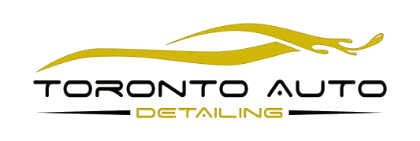Paint Correction
Paint correction is an advanced, precise process that can dramatically improve the appearance of a vehicle’s paintwork. Whether your car has swirl marks, scratches, oxidation, or other imperfections, paint correction can restore the paint’s depth, gloss, and overall quality. While this process requires significant expertise and attention to detail, it offers incredible results, enhancing your vehicle’s aesthetic and increasing its resale value.

What Is Paint Correction?
Paint correction refers to a method of polishing a vehicle’s paint to remove imperfections, such as swirl marks, light scratches, oxidation, and water spots, to restore the paint’s clarity and shine. This procedure is usually carried out using a combination of specialized machines, polishing compounds, and pads. Depending on the severity of the defects and the desired outcome, multiple stages of polishing may be required.
Why Is Paint Correction Important?
Over time, a vehicle’s paint can become marred by daily wear and tear. Sun exposure, bird droppings, tree sap, road debris, and car washes with abrasive brushes can all leave their mark on your car’s surface. Paint correction can repair these damages, bringing back a high-gloss, showroom-quality finish that not only makes your car look amazing but also helps protect it from further damage.
The Paint Correction Process: Step-by-Step
The process of paint correction varies depending on the condition of the vehicle’s paint and the level of restoration needed. However, here’s a general breakdown of the typical stages involved:
- Assessment and Inspection
- A professional will inspect the car’s paint under various lighting conditions to assess the severity of imperfections.
- Tools such as a paint depth gauge may be used to ensure the paint’s thickness is safe for correction.
- Washing and Decontamination
- The vehicle is thoroughly washed to remove dirt, grime, and road contaminants. This often includes using a clay bar to eliminate embedded contaminants that can interfere with the polishing process.
- Polishing and Cutting
- Polishing compounds and pads are selected based on the type of paint and the level of correction needed.
- The first stage of polishing (cutting) removes the deeper imperfections from the surface.
- The second stage (finishing) refines the surface to achieve a smooth, glossy finish.
- Inspection and Touch-Up
- After polishing, the paint is inspected again to ensure that all defects have been removed.
- Any remaining minor imperfections may be treated or touched up before moving on.
- Sealing and Protection
- Once the paint correction is complete, a protective layer of wax, sealant, or ceramic coating is applied. This helps safeguard the newly corrected paint against future damage.
When Is Paint Correction Necessary?
Paint correction is typically recommended when your vehicle’s paint exhibits the following issues:
- Swirl Marks: Light, circular scratches that often result from improper washing or drying techniques.
- Scratches: Deeper, visible marks that penetrate the clear coat and may require more intensive correction.
- Oxidation: Dull, faded paint caused by exposure to the elements, especially sun and rain.
- Water Spots: Streaks and etchings caused by water droplets drying on the paint.
- Holograms: Iridescent, cloudy marks left after poor polishing techniques.
DIY vs. Professional Paint Correction
While some car enthusiasts attempt DIY paint correction, it’s essential to understand that the process requires a high level of skill and precision. Using the wrong products or techniques can result in more harm than good. Professional detailers, with years of experience, have access to specialized tools and knowledge to ensure the best results without damaging your vehicle.
The Benefits of Professional Paint Correction
- Improved Appearance: Professional correction restores the gloss and depth of your vehicle’s paint, making it look brand new.
- Increased Resale Value: A well-maintained, flawless paint job can significantly increase your car’s resale value.
- Long-Term Protection: The added layer of protection ensures that your car’s paint stays in excellent condition for a longer time, resisting new imperfections.
- Time-Saving: Professionals have the tools and experience to complete the job efficiently and effectively, saving you time.
Conclusion
Paint correction is an essential service for those looking to restore and preserve their vehicle’s appearance. Whether your car has suffered from scratches, swirl marks, or oxidation, this process can revitalize the paint, giving your car a flawless, high-gloss finish. While DIY methods may seem tempting, professional paint correction guarantees the best results with long-lasting protection. If you want to enhance your car’s look and value, consider investing in professional paint correction services.
